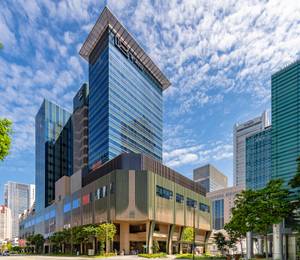Project Architect: Ar. Tan Kay Ngee
Project Team: Bryan Lee, Ar. New Yi Tian, Han Kiang Siew, Ar. Declan Reilly, Hiroshi Kawakami, Chow Eng Khuang
A once-in-a-lifetime project where architecture, landscaping, heritage and conservation come together as one. The project restores, curates and brings to life a new extension of Singapore’s oldest gardens that started 160 years ago. It is a labour of love, research on plants, architectural history and crafts.
This is a project that unifies landscape, architecture, heritage, and conservation through restoration efforts on habitats and architecture. It aims to bring greenery closer to people, extend the style of the English Landscape Movement, and exemplify Singapore’s transformation into a City in Nature. The project is located on land consisting of a mixture of re-wooded landscape and tended grounds of the two colonial houses, Atbara and Inverturret.
To support the development, ancillary programmes for food & beverage, vehicular parking, pedestrian access, and circulation connections were designed. However, building on existing elements over a hundred years old posed a significant challenge, including insufficient incoming electricity and protective measures for the trees and biodiversity zones.
The restoration of the two houses to a Black & White palette with neutral tone microcement or unfinished concrete structures and black-painted metal handrails that match the houses distinguishes new from old elements. The use of materials such as terrazzo, microcement, tinted mirrors and brass-tinted metal cladding in internal finishes reflects a period of understated elegance that suits contemporary palettes.
Lighting is an essential element in introducing a quiet charm to these old houses, and good quality cove lights in the correct colour temperature were introduced to appreciate the spatial quality of the old architecture without seeing the physical light fittings. Reduction design was the main guiding principle in conserving the original spirit of the place and transforming these old buildings into contemporary venues for enjoyment. The most notable design challenge was in the pedestrian bridge that straddles a road without involving staircases or ramp landings through careful calculations of the terrain.
Overall, the Gallop Extension project successfully balanced conservation efforts with modernization, creating a beautiful and functional public space that incorporates nature, architecture, heritage, and conservation.
Jury Citation
The architect’s thorough research of the historical narratives, site context and conserved buildings is evident, as every design intervention was introduced with sensitivity and restraint. While the overall building footprints were limited, the architect had to contend with a vast canvas of elements bridging over eight hectares of forest and English-styled landscape. The curation of the architectural restoration, new structures, maintenance of the view axis and open outdoor spaces, exemplify the architect’s focus and clear-mindedness.
The jury panel commends the architects for their tenacity to lead the project for seven years while employing a sparing use of interventions to strengthen the relationships of existing elements - which was both delightful and practical for reducing carbon footprint. This project demonstrates the architect’s role as a master consultant, mitigating a spectrum of challenges to celebrate both history and public space for a wider audience. For this, the Gallop Extension at Singapore Botanic Gardens is awarded “Design of the Year”.













